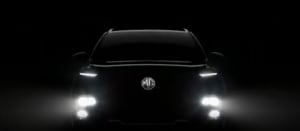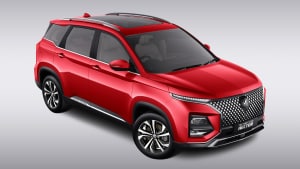Comparison test: MG Hector vs Tata Harrier
From the buzz around 'internet inside', to MG Motor's China-connection, the hype around the Hector is real! Tata's Harrier hasn't been far behind with its Land Rover chassis, Lotus-tuned suspension and drive modes. People seem to love talking about these two SUVs! They also satisfy the 'big' SUV criteria, which puts them a class above the bestselling Hyundai Creta. But more than it being a question of the technology-packed Hector or the robust Harrier, it's which of these would be easier to live with.
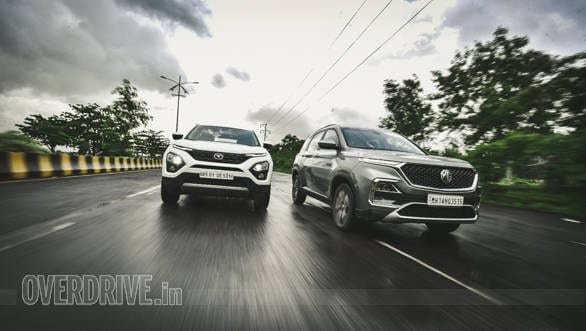
Styling
You can't go wrong with either of these SUVs if you're looking to stand out. Sure, the three-tier lighting is novel now, but you can probably expect more SUVs to use it in the future. That aside, they both look more expensive than they are, just by their sheer size! Stack up the dimensions, and you'll find that the Hector is roughly 50mm longer and taller than the Harrier, which makes it as large as SUVs costing roughly twice as much money. All LED lighting, generously appointed chrome bits, roof rails and more, the Hector has everything that the car-buying public seems to like. It isn't as wide as the Harrier though, and the tall glass area makes it look a little top heavy, made worse by the design of the 17-inch wheels and spindly 215/60 tyres.
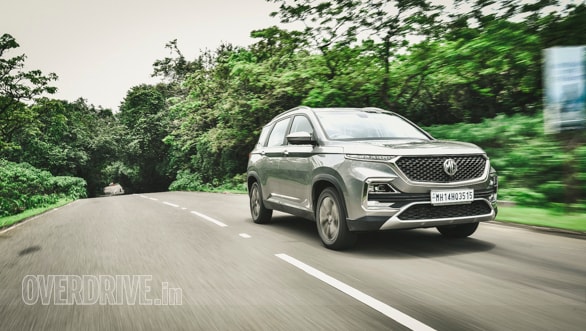
The Harrier is better proportioned with its 235/55 17-inch tyre/wheel combo, but perhaps a little too curvy for everyone's tastes. With its honeycomb grille, bumper design and flared wheelarches could pass off as something from the Land Rover stable, which is high praise indeed. Its rear end is especially striking, while the same can't be said of the Hector, which looks a little overdone from the rear. Both get a pinched rear windowline, and it's a close call as to which looks better overall.
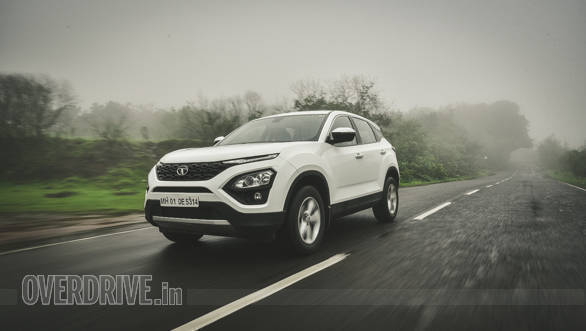
Interiors
The modern vs classic aesthetic continues inside the cabins too. In the Hector's case, the dash clearly seems to be designed around the 10.4-inch touchscreen. The Harrier's cabin feels wider, and with its tan upholstery and brushed silver accents is more pleasing to be sat in - at first. But then you realise that with the exception of the panel under the steering on the lower dash, the Hector is put together better. Though, with MG being a brand new manufacturer, only time will tell how well the Hector will hold up.
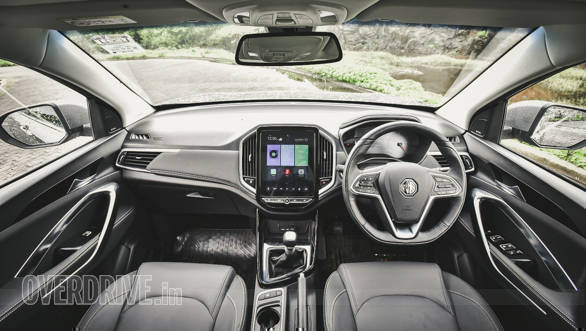
Speaking of ergonomics, the driver's seat in the Hector, though it's 6-way electrically powered, doesn't seem to go quite low enough, and coupled with the low door line, you get the distinct feeling you're sitting on the Hector. By extension, visibility is excellent, far better than the Harrier, in which you're constantly trying to peer around the awkwardly placed and large-sized rear-view mirrors. Getting to the USB charging point hidden away in the Harrier is another game of hide-and-seek. Also, the footwell feels cramped and getting to the dead pedal to rest your foot takes some effort.
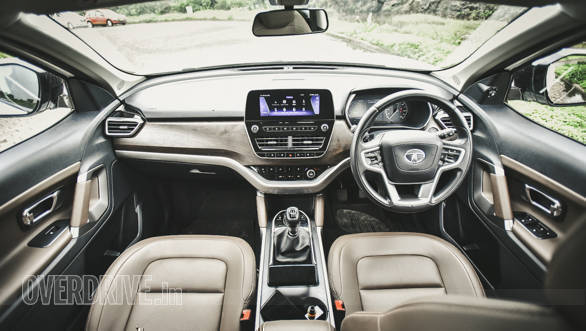
The large glass area helps the feeling of space in the Hector, and the humongous panoramic sunroof certainly adds novelty. Kneeroom in both cars is great, with the Hector offering a smidge more. Comfort wise there's a bit of a trade-off - the Hector's rear bench can be reclined but doesn't offer as much under-thigh support as the Harrier does. But given how high up the rear bench is set on the Harrier, we feel the Hector will be more comfortable over long distances. Getting into, and out of, the rear seat in the Hector is easier too.
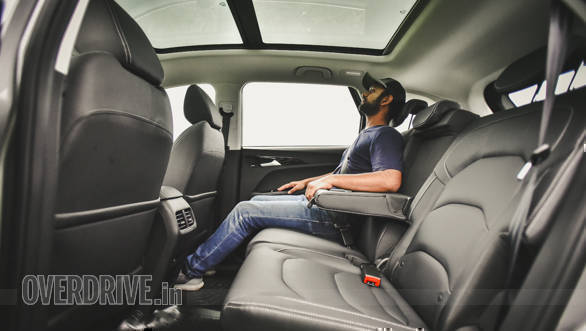
As far as features go, the Hector's list is enough to satisfy the most demanding buyer. Certainly, the experience of interacting with the Hector (as well as the sound quality of the audio system) through its touchscreen and voice commands, is miles ahead of the Harrier. We do wish both were a little more polished - the Hector's 360-degree reversing camera is a boon but the visual feed is a little delayed and gets blown out on a sunny day, while the Harrier's 8.8-inch touchscreen infotainment feels basic.
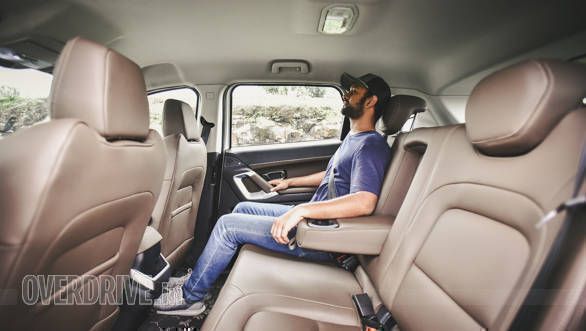
Safety features
Six airbags on both top-end variants is expected, as is the long list of electronic safety aids like ABS, traction and stability control, electronic brake force distribution and hill hold control. The Harrier also adds rollover mitigation to that list. But the Hector goes a little further by offering disc brakes on the rear wheels, a 3-point seat belt and headrest for the middle passenger, and a tyre pressure monitoring system, not to mention front parking sensors. It'll also call emergency services in case an airbag deploys, apart from offering bundled geo-fencing services through its connected car tech. We don't have Indian safety ratings for either, but the Baojun 530 (sold in China, on which the MG Hector has been closely developed) has scored a 5-star rating in the C-NCAP, which is an adaptation of Euro-NCAP regulations.
Engine, performance and efficiency
For two SUVs that share the same engine, they react a whole lot differently when you push the starter button. The FCA-sourced 2-litre diesel (as in the Jeep Compass) comes to life in the Hector with barely any shudder or diesel clatter, and the same can't be said for the Harrier. General NVH and refinement is better in the Hector on the move too. There are some vibrations through the pedals in the Hector which are better damped in the Harrier though, which otherwise transmits vibrations through the chassis and body.
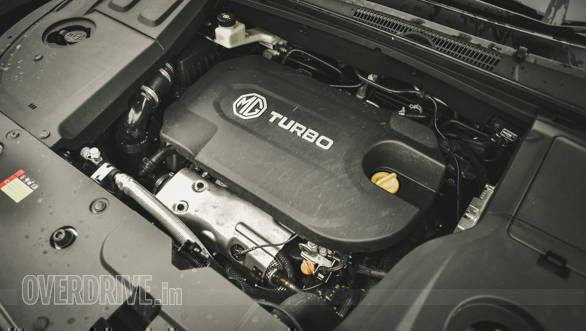
Both these SUVs make the same torque but we're told the Hector has been tuned for better low-end response, as well as having more power, at 170PS versus the Harrier's 140PS. Proof of which comes up in the 11.6s run to 100kmph from standstill for the Hector, versus the Harrier which is a little over a half second slower. The two are pretty matched when it comes to in-gear acceleration, with the Harrier gaining a slight edge as the speeds rise.
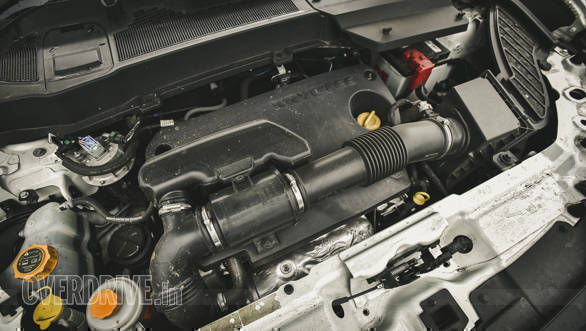
Both feel equally eager when you get going, though the shift action on the Hector's 6-speed feels more positive than on the Harrier, which also suffers from drivetrain lash if you make an enthusiastic shift. For city driving, you're likely to get a workout from operating the clutch on either, and both have first gears that can sometime feel too short for heavy traffic, forcing a shift into second and some amount of slipping the clutch to modulate speed. At highway speeds, you'll end up working the gearbox less in the Hector, since it has more pulling power for overtakes. At an indicated 120kmph, the engine's sitting at 2,200 revs in the Hector, as in the Harrier. As a result, both achieve similar highway efficiency numbers above 17kmpl, but the MG is quite a stretch more efficient in the city - 14.2kmpl against a best of 12.3kmpl for the Tata.
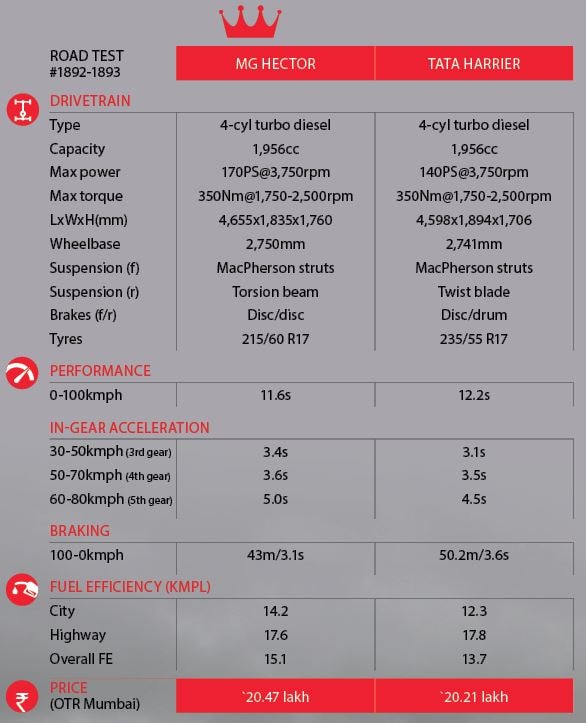
Ride and handling
The Harrier has the bragging rights here, on paper at least, with a platform borrowed from Land Rover and rear suspension tuned with help from Lotus, legendary for nailing chassis set-up. Tata's also chosen to equip the Harrier with a hydraulic steering rack. You would think that would give it a nice consistent steering feel, but coupled with the wider tyres, it ends up feeling heavy at low speeds and vague at high speeds. Also, on a less than perfect surface, there is some kickback which means you really need a firm grip on the chunky steering wheel.
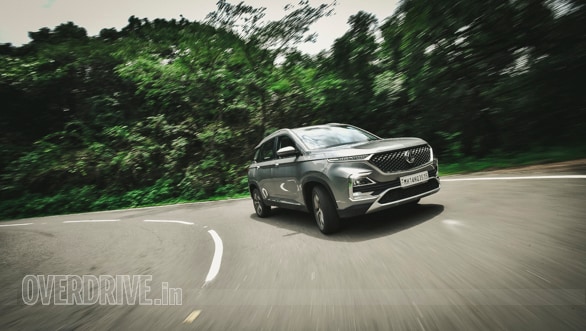
The Hector, in comparison, shrinks in size from behind the wheel, and while the light steering is great for navigating the city, we wish it had a little more weight on the highway. It isn't a cause for worry though, since the Hector has better body control when you're making sudden lane changes, for example. Though, the ride quality on the Harrier is more compliant, there's a shimmy from the body over bad surfaces. It comes down to whether you prefer the more level feel over bad roads with only sharper bumps filtering into the cabin, as on the Hector, or the Harrier's flatten-it-all ride at the expense of feeling a little floaty.
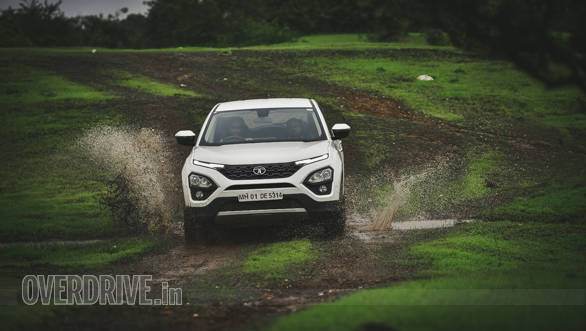
It's that same aspect that causes the Harrier to feel less confidence inspiring when you get to a twisty road. Granted, the Hector doesn't exactly egg you on in the corners, pitching in with fair amounts of body roll, but we far preferred the precision of the steering, even if it felt light, to the Harrier. Though, the Harrier with its meatier tyres does offer more overall grip, you really have to stay on top of it to get it to go where you want. For the true blue enthusiast, the involvement it demands is great news, but we reckon it'll be a handful for most people. The feel from the Hector's brakes is better too, and with those 4-wheel disc brakes, the Hector posted admirable braking figures for the wet conditions we tested in. For Tata to not offer the same at the price is obvious cost-cutting, and the Harrier's braking abilities severely suffer for it. Now, both of these are front-wheel driven, so aren't ideal for venturing off the road, but the Harrier may do a little better with its grippier tyres, and the addition of the terrain modes which slacken steering and throttle response, as well as the electronic interventions. We tried it off-road and it feels like it makes getting through muck just a little more comfortable.
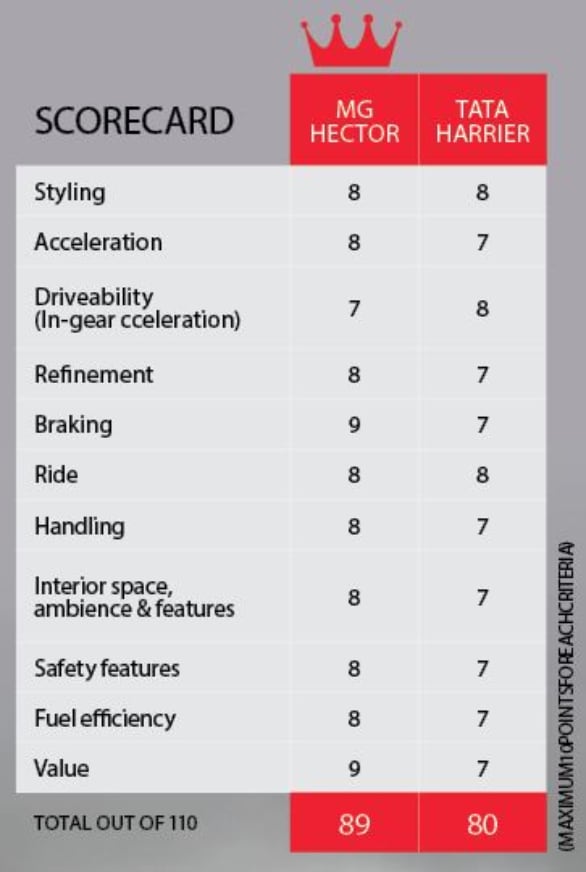
Verdict
MG definitely made a statement with the Hector. Tata's Harrier is good overall, certainly their best car in a lot of ways, but while we feel both could do with fine tuning in terms of fit and finish, it really does feel like the Harrier has a little further to go in that regard.
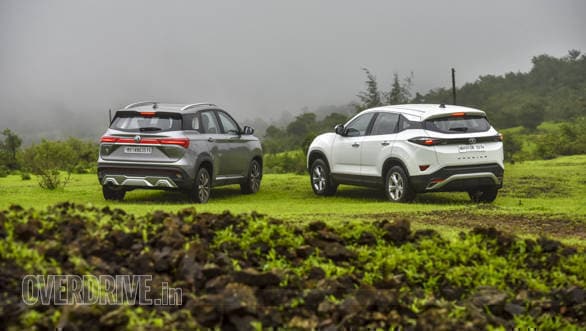
The fact that you get so much more with the Hector for nearly the same amount of money makes it too tempting to pass. The Tata has the advantage in having a wider service network, but the unheard-of 5-year warranty on the MG Hector should help assuage those wondering about after sales. With both these big SUVs offering so much, at the end of the day we'd rather drive home, or be driven home, in the Hector.
Also see: First Look: MG Motor Hector SUV - Features, Specifications, Launch date and Price Video
Also see: MG Hector vs Tata Harrier
Starts Rs 13.69 Lakhs
1956cc
Automatic
170
350
-NA-
Starts Rs 12.9 Lakhs
1496cc
Manual
143
250
15.8 Kmpl
Starts Rs 9.99 Lakhs
1353cc
Automatic
115
242
-NA-
Starts Rs 17.79 Lakhs
1956cc
Automatic
163
350
14.9 Kmpl

